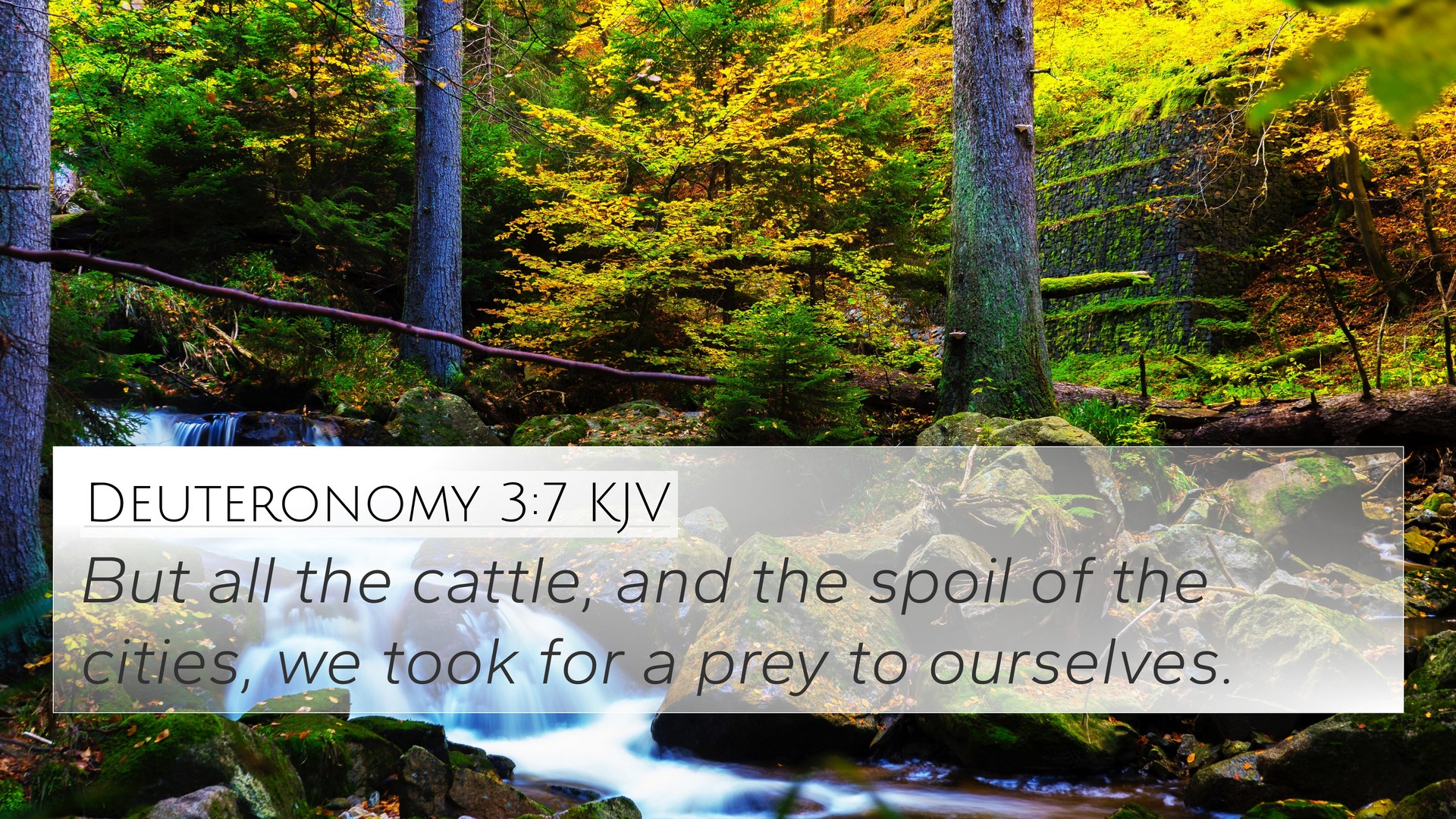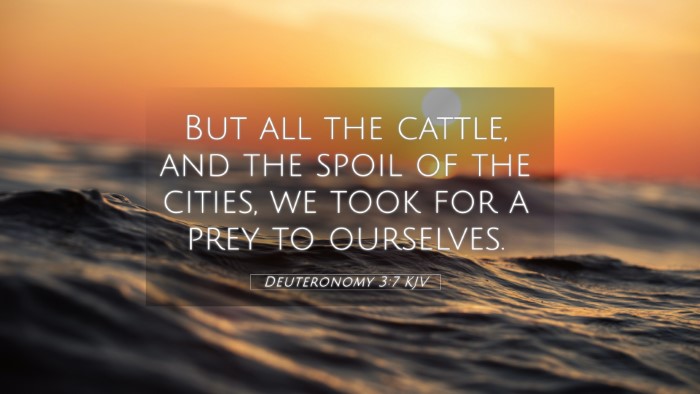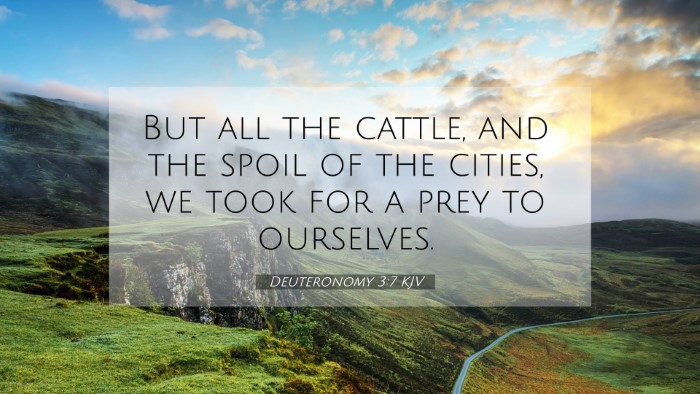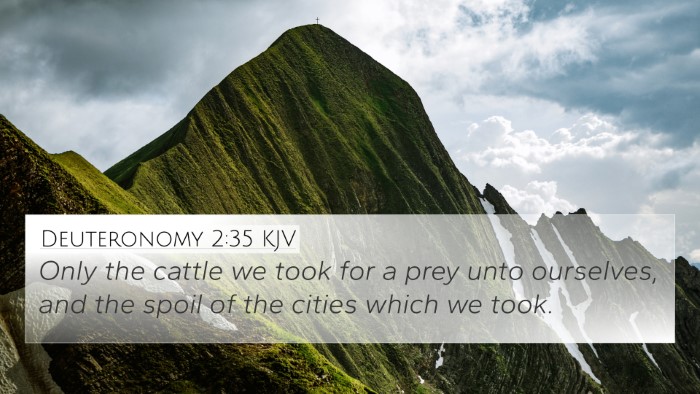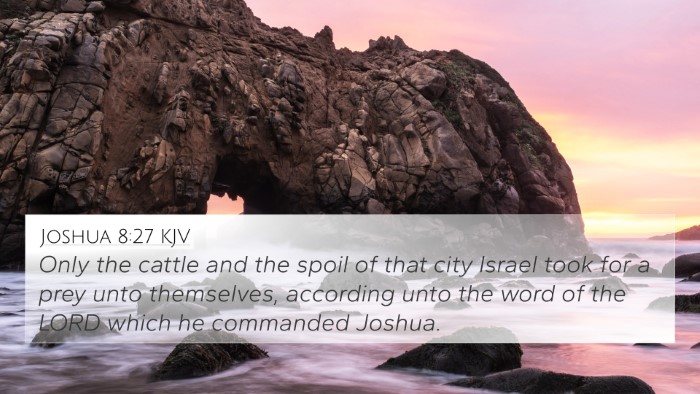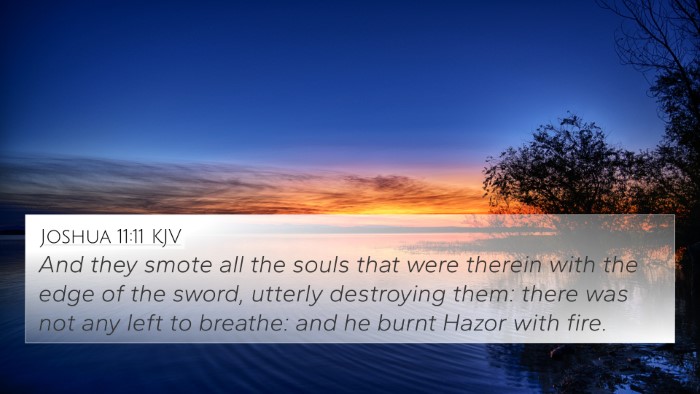Understanding Deuteronomy 3:7
Deuteronomy 3:7 states:
"For all the people of the region of Bashan were as tall as the giant, and were called giants."
This verse presents the context of Israel's encounters with the people of Bashan, led by King Og, who is depicted as a formidable giant. The significance of giants in the biblical narrative serves as both a historical and theological backdrop for the Israelite experience.
Summary of Biblical Commentary Insights
Insights from esteemed public domain commentaries shed light on the meaning and implications of this verse:
-
Matthew Henry:
Henry emphasizes the literal aspect of Og's gigantic stature, which symbolizes the fierce opposition the Israelites faced. This serves as a reminder of God’s strength in delivering His people against seemingly insurmountable foes.
-
Albert Barnes:
Barnes notes that the mention of the giants in Bashan connects to the historical narrative of the Anakim, a group known for their strength. This reinforces the theme of God's faithfulness as He empowers the Israelites to overcome powerful adversaries.
-
Adam Clarke:
Clarke points out that the giants’ presence in Bashan emphasizes the land's natural might and the fear that it instilled in the hearts of many. Yet, it also serves to highlight God’s sovereignty, reassuring the Israelites of their victory through faith and divine assistance.
Thematic Connections
This verse intertwines with numerous themes prevalent throughout the Bible, encouraging a deeper examination through cross-referencing:
Bible Verse Cross-References
- Numbers 13:33: The spies report seeing giants, the sons of Anak, which evokes fear among the Israelites.
- Joshua 12:4: King Og is specifically mentioned as the last of the remnant of giants, affirming the historical context.
- Genesis 6:4: Describes the Nephilim, which ties into the notion of giants in biblical lore.
- 1 Chronicles 20:4: Mentions a battle against descendants of giants, reinforcing the ongoing struggle against these formidable foes.
- Psalm 135:11: References the overthrow of the kings of Bashan, illustrating God’s power.
- Isaiah 26:14: Speaks of the destruction of the rebellious and giants.
- Lamentations 2:21: Reflects on desolation, similar to what the Israelites might feel facing giants.
Importance of Cross-Referencing
Cross-referencing Biblical texts enhances our understanding of the scriptural narrative and inter-Biblical dialogue that informs our faith. Here are some practical applications of cross-referencing:
-
Tools for Bible Cross-Referencing:
Utilizing a Bible concordance or a dedicated Bible cross-reference guide can assist in finding and understanding related verses.
-
Cross-Reference Bible Study:
This method enriches one's understanding by identifying connections between Old and New Testament themes, aiding in deeper insight during personal study or sermon preparation.
-
Identifying Connections:
Recognizing similarities and thematic parallels within scriptures strengthens biblical literacy and encourages richer theological reflection.
Summary
In summary, Deuteronomy 3:7 serves not only as a historical account of Israel’s journey but also as a theological reflection on God’s providential care amid formidable foes. By utilizing tools for cross-referencing and studying connections between Bible verses, believers can draw deeper insights into their faith and scriptural understanding.
